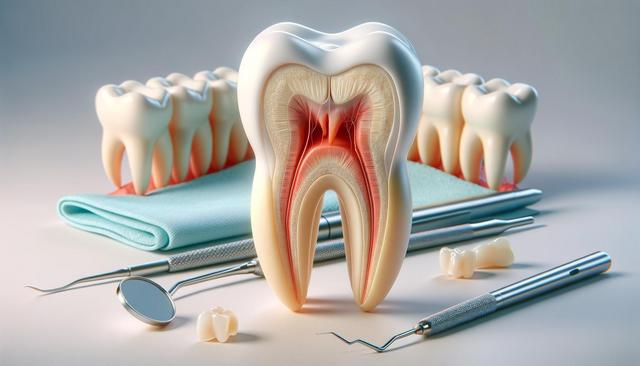Understanding What a Root Canal Is
A Root Canal is a common dental procedure designed to treat infection or damage within the pulp of a tooth. The pulp, located at the center of the tooth, contains nerves, blood vessels, and connective tissues. When this area becomes inflamed or infected due to deep decay, cracks, or trauma, it can cause severe pain and sensitivity. Root Canal Treatment aims to remove the infected tissue, clean the inner chamber, and seal it to prevent further issues. By preserving the natural tooth, this procedure helps maintain your dental structure and function.
Many people associate a Root Canal with discomfort, but advancements in modern dentistry have significantly improved patient experiences. Today, the procedure is often no more uncomfortable than getting a dental filling. It’s important to understand that a Root Canal doesn’t cause pain—it relieves it. If you are experiencing persistent toothache, swelling around the gums, or discoloration of a tooth, it may be time to consult a dental professional for an assessment.
When Is Root Canal Treatment Necessary?
A Root Canal becomes necessary when the pulp of the tooth is infected or damaged beyond repair. There are several signs that indicate the need for Root Canal Treatment:
- Severe tooth pain, especially when chewing or applying pressure
- Prolonged sensitivity to hot or cold, even after the source is removed
- Darkening or discoloration of the tooth
- Swelling or tenderness in nearby gums
- A recurring pimple on the gums
Ignoring these symptoms can lead to the spread of infection, which may affect surrounding teeth or even the jawbone. In such cases, Root Canal Treatment serves as a crucial step in saving the tooth and restoring oral health. If you’re located in a specific region, such as Root Canal{state}, it’s advisable to seek local dental professionals experienced in this procedure.
The Root Canal Procedure: Step-by-Step
The process of receiving a Root Canal typically involves multiple stages, often completed in one or two visits to the dentist or endodontist. Here’s a general breakdown of the steps:
- Examination and X-ray: The dentist examines the tooth and takes X-rays to determine the extent of the infection.
- Anesthesia: Local anesthesia is administered to numb the area, ensuring the patient’s comfort.
- Pulp Removal: A small opening is made in the crown to access and remove the infected pulp.
- Cleaning and Shaping: The inner chamber is thoroughly cleaned and shaped using fine instruments.
- Filling and Sealing: The space is filled with a biocompatible material and sealed to prevent future infection.
In some cases, a temporary filling may be placed until a permanent crown is ready. A final restoration, such as a crown, is essential to protect the treated tooth and restore its full functionality.
Recovery and Aftercare
After Root Canal Treatment, most patients experience relief from the pain that prompted the procedure. Mild soreness or sensitivity may persist for a few days, but this is generally manageable with over-the-counter pain relievers. Your dentist will provide specific aftercare instructions to ensure proper healing and minimize complications. These may include:
- Avoiding hard or chewy foods until the tooth is fully restored
- Maintaining good oral hygiene by brushing and flossing regularly
- Attending follow-up appointments to monitor progress
- Getting a permanent crown if advised by your dentist
Following these steps helps prevent reinfection and supports the long-term success of the Root Canal. In areas such as Root Canal{state}, dental clinics offer tailored care plans to guide patients through the recovery process.
Benefits and Longevity of Root Canal Treatment
One of the primary advantages of Root Canal Treatment is its ability to save your natural tooth, which is often preferable to extraction. Preserving your original tooth helps maintain proper chewing function, jaw alignment, and aesthetic appearance. The treated tooth can last many years, especially when reinforced with a crown and properly cared for. Other benefits include:
- Relief from persistent tooth pain and infection
- Restoration of normal biting and chewing ability
- Protection of other teeth from excessive wear or strain
- Improvement in overall oral health
Root Canal procedures have a high success rate, and many teeth treated this way can last a lifetime. Clinics offering Root Canal{state} services often emphasize prevention and personalized care to ensure optimal outcomes for each patient.
Conclusion: Is a Root Canal Right for You?
If you’re experiencing symptoms of tooth infection or damage, a Root Canal could be a practical solution to relieve pain and restore function. It’s a well-established procedure that offers long-term benefits while preserving your natural smile. Consulting a qualified dental professional can help determine whether Root Canal Treatment is appropriate for your situation. With proper care and timely intervention, you can enjoy improved comfort and dental health for years to come—especially with access to skilled providers in Root Canal{state}.



Leave a Reply